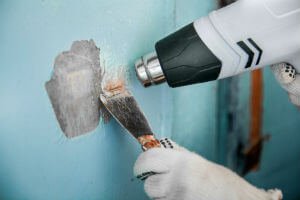Blog
What are Your Options for Removing Lead Paint from Your House?
Posted on behalf of Peter T. Nicholl in Lead Paint Poisoning Published on February 1, 2019 and updated on March 7, 2022. If you discover lead paint in your home, your first thought might be to move as quickly as possible. However, it is also possible to pay to have the lead paint safely removed from the home to prevent you or your family members from being exposed to it, including the harmful dust it can leave behind.
If you discover lead paint in your home, your first thought might be to move as quickly as possible. However, it is also possible to pay to have the lead paint safely removed from the home to prevent you or your family members from being exposed to it, including the harmful dust it can leave behind.
If you or your family members were injured from exposure to lead paint, the experienced Maryland lead paint poisoning lawyers from Peter T. Nicholl Law Offices can help. Contact us to schedule a free consultation to discuss your claim and learn about your legal options for recovering compensation.
Options for Removing Lead Paint from Your Home
You have several options for removing lead paint from your home, including:
Encapsulation
This involves rolling on a special paint-like coating that creates a watertight seal over the dangerous lead paint. This is usually the most affordable and easiest option for protecting the occupants of a property from lead paint.
Enclosure
When enclosing lead paint, you cover the old surface with a new surface, such as placing drywall over it. If you remove the enclosure, you will have to deal with the lead paint at that time.
Removal
You may be able to remove lead paint by wire brushing or wet scraping it. However, professionals should complete this work to help ensure dust is not left behind. Some contractors use an electric sander with an air-filtered vacuum to collect the dust.
Replacement
This option involves removing the areas where the lead paint is present and replacing the building materials. For example, you may need to replace a wall, window or door.
Is Lead Paint Safe If It Remains Undisturbed?
Some environmental hazards like asbestos are relatively safe if left undisturbed. It is only upon disturbing these materials that dangerous fibers may be released.
However, lead paint is not as safe if you simply ignore it because it may peel and chip away over time, which might cause you or your children to be exposed. Additionally, when paint peels away, dust particles can become airborne and you can breathe them in.
Risk Factors for Lead Paint
There are certain risk factors that increase the likelihood that you or your family will be exposed to dangerous lead paint. These factors include:
- Living in an older home – Properties built before 1978 are likely to contain lead-based paint. 1978 was the year the federal government banned the consumer use of lead-based paint. The older your home is, the more likely it is that it contains lead-based paint. For example, the Environmental Protection Agency estimates that 83 percent of privately occupied housing units built before 1980 have lead-based paint on a surface in or around the building, 76 percent of homes built after 1960 have lead-contaminated paint, and 92 percent of homes built between 1940 and 1959 have lead paint in them.
- Your children play with older, painted toys – Older furniture or toys may contain lead-based paint or lead materials. Children who bite or swallow toys may suffer lead poisoning.
- You have a certain type of job – Individuals who work in the construction, painting, mining, smelting, recycling, autobody or plumbing industries may be exposed to lead paint when they are working.
- You have certain hobbies – Lead is found in fishing sinkers and jigs, weights used in stock cars, pottery glazes and dyes, and other products that are often used in hobbies.
- Home renovation projects – If you renovate your home, you may disturb lead paint. It is best to use a lead-safe certified renovator to repair, paint or renovate your home.
Contact an Attorney for Assistance
If you or your loved one suffered injuries from lead paint exposure, it is important that you seek qualified legal assistance. You may be entitled to compensation for medical expenses, lost wages, and pain and suffering. The experienced lead paint poisoning lawyers at Peter T. Nicholl Law Offices can discuss your claim during a free consultation.
Our skilled attorneys can investigate the cause of your injuries and attempt to hold the liable parties accountable for the injuries they caused. We will pursue maximum compensation on your behalf. We work on a contingency fee basis, so we are only paid for our services if we help you receive compensation on your claim.
Contact us today to schedule a Free Case Review.

